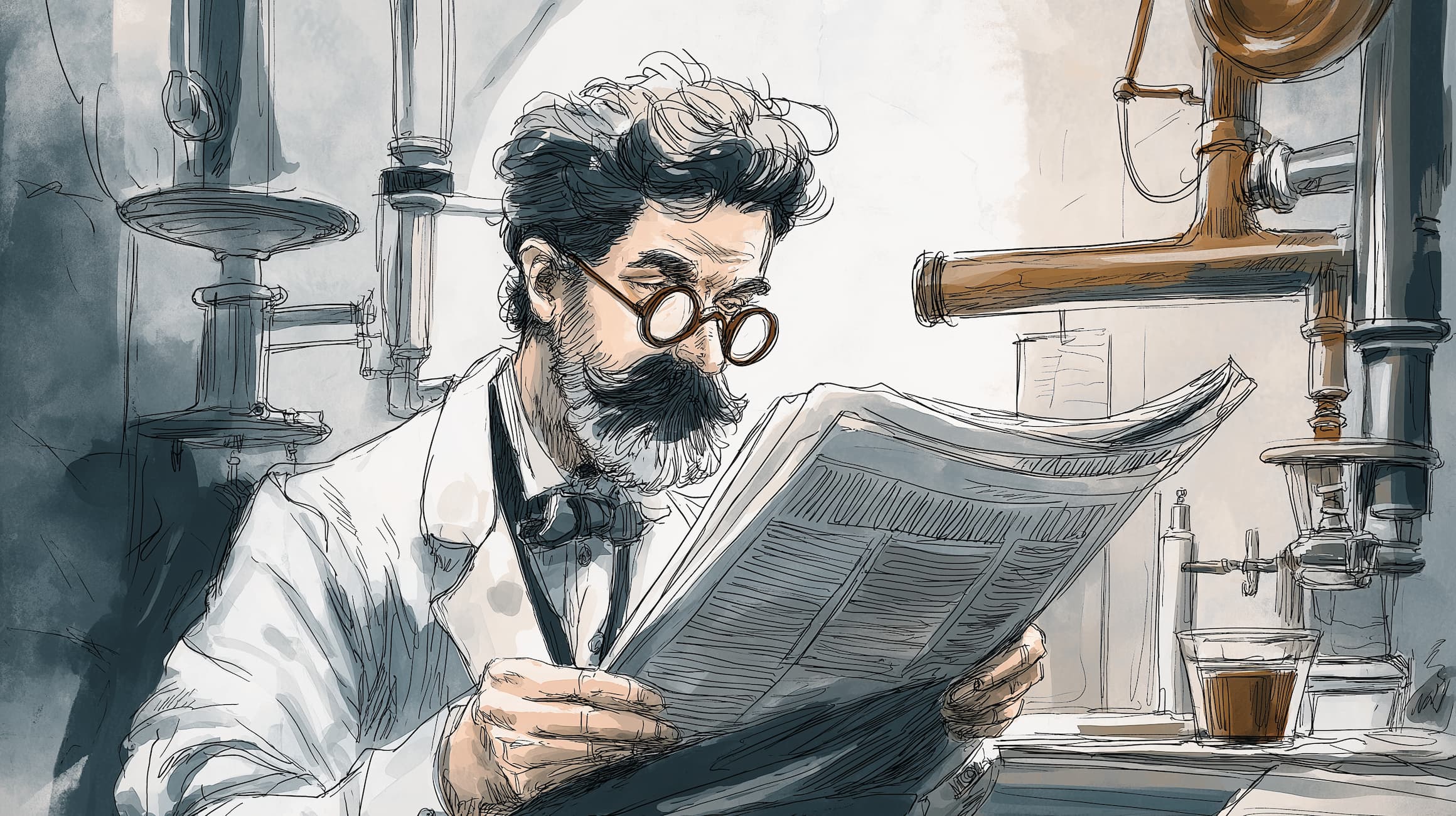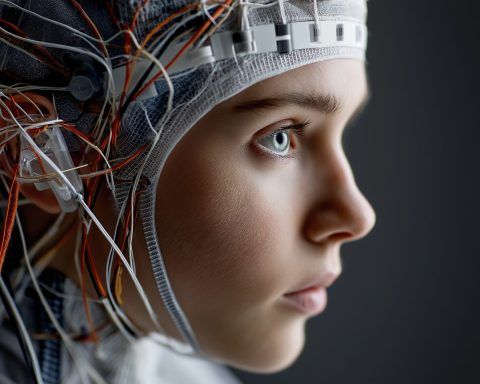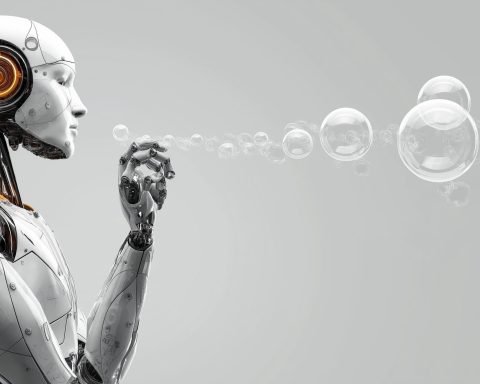- The distant black hole CAPERS-LRD-z9 was confirmed in a galaxy about 500 million years after the Big Bang, with light travel of 13.3 billion years and an estimated mass up to 300 million solar masses.
- NASA/ISRO’s NISAR satellite unfurled its 12-meter mesh radar antenna reflector in orbit on Aug 15, 2025, in about 37 minutes, the largest radar dish NASA has launched.
- Astatine-188, the heaviest known proton-emitting isotope with 85 protons and 103 neutrons, was discovered by Finnish researchers, produced by smashing Strontium-84 into a silver target, and described as strongly deformed or “watermelon-shaped.”
- Cyclo[48]carbon, a ring of 48 carbon atoms stabilized as a [4]catenane, remains intact in solution at 20°C for about 92 hours and was reported in Science.
- Great white sharks are now understood to comprise three distinct global populations, based on 150 mitochondrial genomes and dozens of nuclear genomes showing a discordance between mtDNA and nuclear DNA.
- Modeyso (dordaviprone) received FDA accelerated approval in August 2025 for diffuse midline glioma (H3 K27M-mutant) in patients aged 1 and up, offering durable tumor responses but not a cure.
- Sudan faces its worst cholera outbreak in years, with nearly 100,000 suspected cases and over 2,400 deaths, worsened by climate change and ongoing conflict.
- Greenland meltwater is boosting marine nutrient upwelling, with a NASA-supported study predicting summer phytoplankton blooms near Greenland could rise 15–40% due to increased nutrients.
- Beijing hosted the Humanoid Robot Olympics from Aug 15–17, 2025, featuring 280 teams from 16 countries competing in 26 events, including a 1500m race in which a robot collapsed and another head flew off mid-run.
- Event organizers say the Robo-Olympics will generate data to improve real-world robot applications, especially balance and coordination for factory and caregiving robots.
August 16–17, 2025 saw a flurry of scientific breakthroughs and events across multiple fields – from deep space discoveries and cutting-edge physics to medical milestones and tech extravaganzas. Below is a roundup of the biggest science news this weekend, organized by discipline, complete with expert insights and sources.
Space & Astronomy
- Earliest Black Hole at Cosmic Dawn (Aug 6, 2025): Astronomers confirmed the most distant black hole ever observed, lurking in a galaxy nicknamed CAPERS-LRD-z9 just 500 million years after the Big Bang [1] [2]. Light from this supermassive black hole traveled 13.3 billion years to reach us. “We’re really pushing the boundaries of what current technology can detect,” said Dr. Anthony Taylor of UT Austin, lead author of the discovery published in Astrophysical Journal Letters [3]. Co-author Dr. Steven Finkelstein noted this adds to evidence that black holes grew much faster in the early universe than expected [4]. The black hole’s mass is estimated at up to 300 million Suns, an enormous size for such an early epoch [5] [6]. Sources: UT Austin News, Astrophysical Journal Letters. [7] [8]
- NASA-ISRO NISAR Satellite Unfurls Giant Radar (Aug 15, 2025): In a milestone for Earth observation, the NISAR satellite – a joint NASA/ISRO mission launched on July 30 – successfully deployed its 12-meter (39 ft) mesh radar antenna reflector in orbit [9]. This massive “umbrella” dish, the largest ever launched by NASA, fully unfurled in just 37 minutes [10]. “This marks a significant milestone in the capabilities of the satellite,” said Karen St. Germain, director of NASA’s Earth Science Division [11]. NISAR’s dual L- and S-band radars will scan nearly the entire Earth every 6 days, monitoring changes in ice sheets, earthquakes, volcanoes, and forests with unprecedented detail [12]. St. Germain noted the data “will have a major impact” on how communities prepare for natural disasters and manage food security [13]. The successful deployment (nicknamed the “bloom”) clears the way for NISAR to begin science operations by late fall 2025 [14]. Sources: NASA JPL press release. [15] [16]
Physics
- “Watermelon-Shaped” Atomic Nucleus Discovered (Aug 16, 2025): Nuclear physicists in Finland announced the discovery of astatine-188, the heaviest known proton-emitting isotope, marking the first such find in nearly 30 years [17] [18]. This rare nucleus (85 protons, 103 neutrons) is the lightest isotope of astatine yet found and is highly deformed – described as strongly prolate or “watermelon shaped” [19]. It was created by smashing a Strontium-84 ion beam into a silver target, then identified with specialized detectors [20]. “Proton emission is a rare form of radioactive decay… the nucleus emits a proton to take a step towards stability,” explained doctoral researcher Henna Kokkonen [21], who led the study published in Nature Communications. Kokkonen noted “the properties of the nucleus suggest a trend change in the binding energy of the valence proton,” possibly due to an unprecedented nuclear interaction in heavy elements [22]. Fellow researcher Kalle Auranen added that studying such exotic nuclei, which live only microseconds, requires extremely precise techniques [23]. Sources: University of Jyväskylä press release, Nature Communications. [24] [25]
Chemistry & Materials
- New Carbon Allotrope Created – Cyclo[48]carbon (Aug 15, 2025): Chemists at the University of Oxford have synthesized a new form of pure carbon – a ring of 48 carbon atoms – that is stable at room temperature [26] [27]. The molecule, cyclo484848carbon, consists of 48 carbons bonded in an alternating single-triple bond loop and was cleverly stabilized by threading it through three larger macrocycles, forming a so-called “[4]catenane” structure [28]. Previously, carbon rings could only be observed in gas or at cryogenic 10 K temperatures; now this cyclocarbon remains intact in solution at 20 °C for a half-life of ~92 hours [29]. The breakthrough, published in Science, is only the second new carbon allotrope ever isolated under ambient conditions (the first being buckyballs in 1990) [30]. “Achieving stable cyclocarbons in a vial at ambient conditions is a fundamental step,” said Dr. Yueze Gao, lead author, “This will make it easier to study their reactivity and properties under normal laboratory conditions.” [31] Senior author Prof. Harry Anderson hailed it as the culmination of a years-long quest, noting “there were many times when the goal seemed unrealistic… It is satisfying to have reached this point.” [32] [33] This new carbon ring could open a door to novel carbon-based materials and chemistry. Sources: Oxford Department of Chemistry, Science. [34] [35]
Biology
- Great White Sharks’ DNA Mystery Deepens (Aug 16, 2025): A global genetic study published in PNAS has overturned a long-standing theory about great white shark populations, revealing a baffling DNA mismatch that scientists still can’t fully explain [36] [37]. After recovering from near-extinction 10,000 years ago, today’s white sharks are split into three distinct populations worldwide – yet they show stark differences between their mitochondrial DNA (inherited from mothers) and their nuclear DNA (inherited from both parents) [38] [39]. Historically, researchers thought female sharks’ habit of returning to the same breeding grounds (philopatry) explained why mitochondrial DNA diverged by region while nuclear DNA remained uniform [40] [41]. The new study, which analyzed 150 mitochondrial genomes and dozens of nuclear genomes from sharks across the globe, found that explanation lacking: philopatry alone could not account for the large mtDNA differences [42] [43]. Other hypotheses like skewed sex ratios and genetic drift were tested and also failed to explain the discordance [44] [45]. “The honest scientific answer is we have no idea,” admitted Florida Museum researcher Dr. Gavin Naylor, on what evolutionary force caused this genetic oddity [46]. One possibility is natural selection acting differently on mitochondrial genes – a far-fetched notion, but the last one standing after ruling out alternatives [47] [48]. The findings highlight how much we still have to learn about the “remarkable recovery” and population dynamics of great white sharks [49] [50]. Sources: Florida Museum of Natural History, PNAS. [51] [52]
Health & Medicine
- First-Ever Drug for Fatal Pediatric Brain Tumor (Aug 2025): In an unprecedented advance, the U.S. FDA granted accelerated approval to Modeyso (dordaviprone) – the first drug ever approved for diffuse midline glioma (H3 K27M-mutant), a deadly brain tumor that primarily strikes children and young adults [53]. Until now, this aggressive cancer (a type of pediatric glioma) had no approved treatments, with patients typically only receiving radiation [54]. “It’s definitely an important step forward in a field where nothing has been approved,” said Dr. Patrick Wen, neuro-oncologist at Dana-Farber, noting that previously doctors had no options beyond palliative radiation [55] [56]. In clinical trials, Modeyso – an oral precision therapy – showed durable tumor responses, significantly shrinking these inoperable tumors in some patients [57]. The FDA’s decision, announced in early August, allows Modeyso to be used for patients (ages 1 and up) with recurrent midline gliomas after standard therapy [58]. Experts caution that it benefits “only a subset of patients” and isn’t a cure, but emphasize the breakthrough offers new hope for a cancer with a median survival under a year [59]. Researchers are now studying combination approaches to improve outcomes further. Sources: FDA announcement; Dana-Farber via CURE Today. [60] [61]
- Cholera Outbreak Worsened by Climate in Sudan (Aug 16, 2025): Sudan is grappling with its worst cholera outbreak in years – nearly 100,000 suspected cases and over 2,400 deaths – and scientists warn that climate change and conflict are amplifying the crisis [62] [63]. Ongoing civil war has displaced millions into crowded camps with poor sanitation, and heavy seasonal rains are contaminating water supplies, creating ideal breeding conditions for Vibrio cholerae bacteria [64] [65]. “When there’s social strife… causing breakdown of water and sanitation, you create the conditions for the bacterium to become abundant,” explained Dr. Rita Colwell, a veteran cholera expert [66] [67]. Warmer temperatures and flooding driven by climate change are making cholera naturally more prevalent, “just exacerbating” its spread among vulnerable populations, Colwell said [68]. This outbreak, described as a “concatenation” of conflict and climate factors [69], underscores how global warming can turn bacterial diseases into humanitarian disasters. Aid groups like Doctors Without Borders are urgently calling for improved clean water infrastructure to stem the deadly outbreak [70]. Sources: Scientific American, WHO reports. [71] [72]
Environmental Science
- Greenland’s Melting Ice Feeds Ocean “Bloom” (Aug 15, 2025): New research shows that meltwater from Greenland’s ice sheet is boosting marine food webs in an unexpected way. As glaciers like Jakobshavn rapidly shed ice, the torrents of fresh water rushing into the sea act as a natural pump, dragging nutrient-rich deep ocean water up to the surface [73] [74]. A NASA-supported study published in Nature Communications: Earth & Environment used advanced computer simulations to model this process, finding that summer phytoplankton blooms near Greenland could increase by 15–40% due to the nutrient surge [75] [76]. These microscopic algae form the base of the Arctic Ocean ecosystem and absorb CO₂, so understanding their fuel sources is key for climate science [77] [78]. “We were faced with this classic problem of trying to understand a system that is so remote and buried beneath ice,” said Dr. Dustin Carroll, an oceanographer at NASA/JPL, “We needed a gem of a computer model to help” unravel it [79] [80]. The model revealed that glacial runoff acts like a natural upwelling mechanism, delivering vital nutrients (like nitrate and iron) to surface waters and potentially bolstering fisheries – an “unexpected side-effect” of ice loss [81] [82]. However, Carroll cautions this was “one key system” among hundreds of Greenland glaciers; the broader impact on the Arctic Ocean will require further study as climate-driven melt accelerates [83] [84]. Sources: NASA JPL / SciTechDaily, Nature Communications E&E. [85] [86]
Technology & Robotics
- Humanoid “Robot Olympics” Debut in Beijing (Aug 15–17, 2025): The world’s first Humanoid Robot Games – a three-day international “Robo-Olympics” – kicked off in Beijing, showcasing both rapid advances and current limitations in robotics. 280 teams from 16 countries sent bipedal humanoid robots to compete in 26 events including sprinting, soccer, kickboxing, and even dexterity challenges [87] [88]. Spectators were treated to a spectacle of robots racing and playing – and frequently crashing. During a 1500m footrace, one robot dramatically collapsed at full speed, and in a soccer match, four robots piled up in a tangled heap on the turf [89] [90]. One machine even had to drop out after its head flew off mid-run – “Keeping the head balanced while in movement is the biggest challenge for us,” explained Wang Ziyi, a 19-year-old member of the Beijing university team that built it [91] [92]. Despite the stumbles (human handlers often had to help fallen bots up), many robots also managed to right themselves autonomously, drawing cheers [93]. Organizers say the games provide valuable data to improve real-world robot applications – for example, soccer and relay races help train balance and coordination algorithms that could translate to factory or caregiving robots [94] [95]. China has invested billions in humanoid robotics, touting them as part solution to an aging workforce and a showcase of its AI prowess [96] [97]. However, experts urge caution against the hype. “The state of AI is nowhere near seeing humanoids operating out of uncontrolled environments,” noted Dr. Jonathan Aitken, a UK robotics expert, underscoring that today’s impressive demos still struggle with everyday tasks in messy human settings [98] [99]. The Beijing “Robot Olympics” highlighted remarkable progress – agile bipedal bots that can run, fight, and dance – while also laying bare the gaps between flashy competitions and the dream of helpful humanoids in daily life [100] [101]. Sources: Reuters, The Guardian. [102] [103]
Sources: Major journals, institutional press releases, and reputable news outlets as cited above (Astrophysical Journal Letters, Nature journals, Science, FDA, NASA, University press releases, Scientific American, Reuters, The Guardian, etc.). Each story’s sources are directly linked in-text for further reading.
References
1. news.utexas.edu, 2. news.utexas.edu, 3. news.utexas.edu, 4. www.livescience.com, 5. news.utexas.edu, 6. news.utexas.edu, 7. news.utexas.edu, 8. news.utexas.edu, 9. ts2.tech, 10. ts2.tech, 11. ts2.tech, 12. ts2.tech, 13. ts2.tech, 14. ts2.tech, 15. ts2.tech, 16. ts2.tech, 17. www.sciencedaily.com, 18. www.sci.news, 19. www.sci.news, 20. www.sci.news, 21. www.sci.news, 22. www.sci.news, 23. www.sci.news, 24. www.sci.news, 25. www.sci.news, 26. www.chem.ox.ac.uk, 27. www.chem.ox.ac.uk, 28. www.chem.ox.ac.uk, 29. www.chem.ox.ac.uk, 30. www.chem.ox.ac.uk, 31. www.chem.ox.ac.uk, 32. www.chem.ox.ac.uk, 33. www.chem.ox.ac.uk, 34. www.chem.ox.ac.uk, 35. www.chem.ox.ac.uk, 36. www.sciencedaily.com, 37. www.sciencedaily.com, 38. www.sciencedaily.com, 39. www.sciencedaily.com, 40. www.sciencedaily.com, 41. www.sciencedaily.com, 42. www.sciencedaily.com, 43. www.sciencedaily.com, 44. www.sciencedaily.com, 45. www.sciencedaily.com, 46. www.sciencedaily.com, 47. www.sciencedaily.com, 48. www.sciencedaily.com, 49. www.sciencedaily.com, 50. www.sciencedaily.com, 51. www.sciencedaily.com, 52. www.sciencedaily.com, 53. ts2.tech, 54. ts2.tech, 55. ts2.tech, 56. ts2.tech, 57. ts2.tech, 58. ts2.tech, 59. ts2.tech, 60. ts2.tech, 61. ts2.tech, 62. ts2.tech, 63. ts2.tech, 64. ts2.tech, 65. ts2.tech, 66. ts2.tech, 67. ts2.tech, 68. ts2.tech, 69. ts2.tech, 70. ts2.tech, 71. ts2.tech, 72. ts2.tech, 73. ts2.tech, 74. ts2.tech, 75. ts2.tech, 76. ts2.tech, 77. ts2.tech, 78. ts2.tech, 79. ts2.tech, 80. ts2.tech, 81. ts2.tech, 82. ts2.tech, 83. ts2.tech, 84. ts2.tech, 85. scitechdaily.com, 86. scitechdaily.com, 87. www.reuters.com, 88. www.reuters.com, 89. www.reuters.com, 90. www.reuters.com, 91. www.theguardian.com, 92. www.theguardian.com, 93. www.reuters.com, 94. www.reuters.com, 95. www.reuters.com, 96. www.theguardian.com, 97. www.theguardian.com, 98. www.theguardian.com, 99. www.theguardian.com, 100. www.theguardian.com, 101. www.theguardian.com, 102. www.reuters.com, 103. www.theguardian.com










